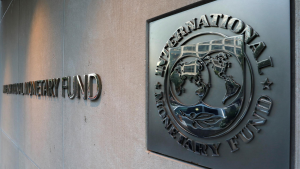It is already a well-known fact that once humankind successfully heals from coronavirus, our problems won’t end there. Many experts are already warning that soon after the epidemic finishes, another crisis will be knocking at our door. And it might be one that could send us two steps back from everything we’ve achieved in the last decade. And this may very well have a much bigger effect on developing economies.
While the developed countries will most definitely feel the effect of coronavirus mostly in the unemployment rate, it is not them who will suffer the most. Indeed, developing economies that are still transitioning to stable economies and highly depend on the help of the 1st world will be hit the hardest by coronavirus. Is the global pandemic already making its mark on the world? Unfortunately, yes it does – and we are already facing many changes.
The Financial Shockwave for developing economies
Developing countries, such as Bangladesh, sub-Saharan countries, and many others, strongly depend on the external help they get from many countries of Europe and the USA. Now that nearly everyone is economically struggling, each country has turned to itself, naturally prioritizing its citizens before anyone else. So, where does this leave developing economies that can’t make it on their own, How will they find a way to come out of the coronavirus crisis unscathed?
Unfortunately, nobody has offered a solution yet, but we are witnessing a lot of negative effects. Bangladesh, which spent millions on educating its young nation and improving its health care system, will probably be forced to stop funding these two areas. The money will go directly into fighting the epidemic and the potential economic crisis following it.
This is only one country out of many that are suffering from the same or worse effects from COVID-19. And this is exactly what might set the world back, nullifying the many accomplishments we’ve made so far.
In 1990, 36% of the world’s population was considered to be living on a little bit more than $1 a day. This sums up to about 1.9 billion people, more than North America and Europe combined. By 2016, this number dropped to approximately 700 million people, which represents a revolutionary improvement. This sums up to only 10% of the world’s population.
Mostly, some of the Asian and African countries owe these numbers to their first-world partners, whom they have put a lot of hope into stabilizing their economies. In India, for example, global initiatives saved over 170 million people from poverty, while Bangladesh lifted over 20 million people out of poverty.
Now, these numbers are rising again, and it is a legitimate reason to worry because poverty leads to illness and disease.
Cutting-down investment

Over 90 countries have already asked for emergency help from the International Monetary Fund, however, not many developed, well-standing economies are willing to help for now. The USA alone has decided to invest almost $3 trillion to help its working class and small businesses and, protect people from falling into poverty. Japan invested almost a trillion, and many European countries have followed the same path.
India, on the other hand, has decided to invest only $22.5 billion, and Pakistan plans to spend only $7.5 billion on helping its working class, even though it is the fifth largest and most populated country in the world.
Now that countries have come to a halt, we have yet to see whether the countries of the first world will be able to help those in need. Many experts say that this might be necessary because the biggest reason the world recovered from the WW2 is precisely strong economic ties between the countries. In a way, everyone hopes that this already established and tested tactic will come to life one more time to help humanity through a difficult time.





